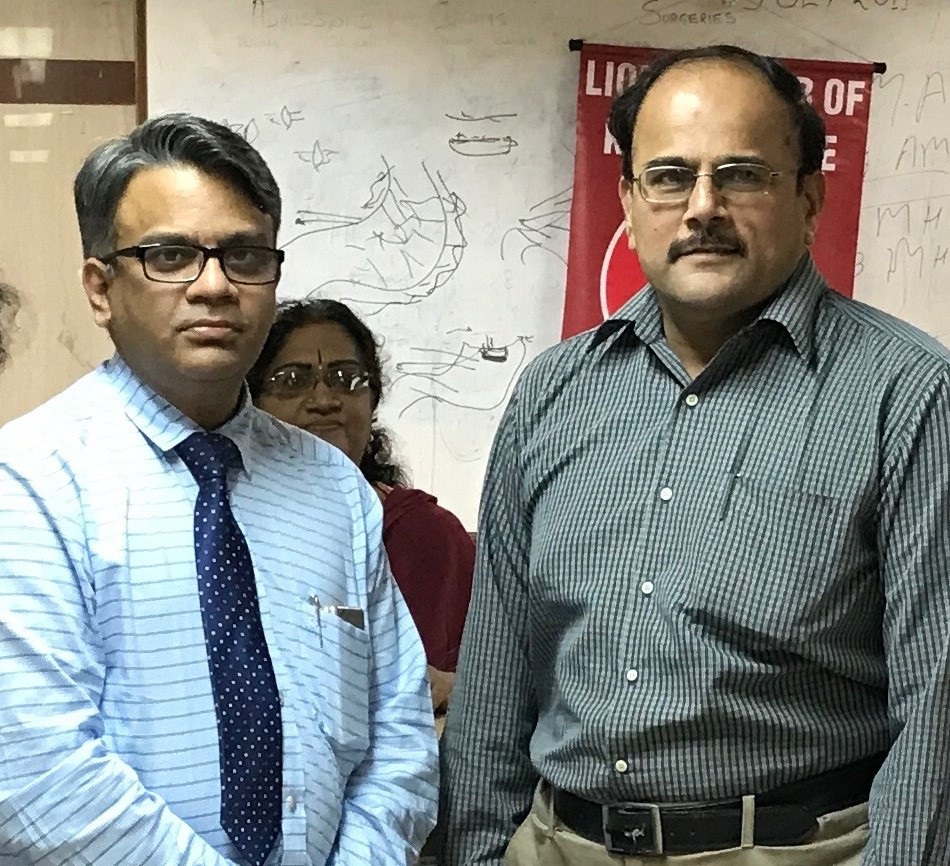ALERT!
This site is not optimized for Internet Explorer 8 (or older).
Please upgrade to a newer version of Internet Explorer or use an alternate browser such as Chrome or Firefox.
Highlighting Recent Research: Effect of Prosthesis Patient Mismatch in Mitral Position on Pulmonary Hypertension
Prosthesis patient mismatch (PPM), where a replacement valve that is too small relative to the patient’s body size results in an increased gradient across the prosthesis, has been studied extensively in the aortic position but less so in the mitral position. Despite the smaller literature on this topic, PPM at the mitral position is associated with worse outcomes after valve replacement (Magne, 2007; Lam, 2007). An important objective of mitral valve repair or replacement is reduction of the pulmonary arterial hypertension (PAH) that often accompanies severe mitral disease, and PPM can be likened to residual mitral stenosis. Although a causative relationship between PPM and postoperative PAH is not established, smaller replacement valve sizes and persistent gradients across mitral prostheses are associated with reduced PAH regression after surgery (Li, 2005; Lam, 2007). In a recent issue of the European Journal of Cardio-Thoracic Surgery, Ammannaya and colleagues studied the relationship between PPM, PAH, and outcomes following mitral valve replacement to better understand the importance of avoiding PPM during this procedure. The effect of PPM is of particular importance in the mitral position, as it is not possible to modify the annulus to accommodate a valve size that is larger than the annulus but a better match for the patient. “While aortic root widening allows for implantation of a larger prosthesis in the aortic position, no such alternative is available in the mitral position,” said Ganesh Ammannaya, the lead author of the study. “A preventive strategy is hence imperative to prevent the deleterious effects of PPM in the mitral position.”
Ammannaya and colleagues evaluated the change in PAH from before mitral intervention to six months after mitral valve replacement in order to quantify the relationship between PPM and the resolution of PAH (Ammannaya, 2017). Out of a cohort of 500 patients who had valves replaced between 1990 and 2016, 224 were propensity matched between no PPM and PPM groups for retrospective analysis. Prior to operation, a similar rate of PAH was seen in each group (82% versus 83%, p = 0.39). After six months, however, only 19% of the group without PPM still showed PAH, whereas PAH was found in 66% of the patients with PPM (p<0.001). Additionally, PPM was associated with a higher risk of postoperative congestive heart failure in both the univariate analysis (p = 0.018) and the propensity-matched cohort (18/112 versus 8/112, p = 0.037). Patients with PPM had a lower overall survival rate and a lower rate of freedom from cardiac death, and incidence of mitral PPM was a significant risk factor for overall survival (hazard ratio = 1.89, 95% CI 1.21 – 2.64, p = 0.006). “The data at large were on expected lines with regard to the overall survival and freedom from cardiac death. Nevertheless, I was surprised when it came to determining the independent variables influencing systolic PA pressure,” said Dr Ammannaya. Only the indexed effective orifice area (EOA) of the prosthesis and the transvalvular gradient were identified in multivariate analysis as independent predictors of postoperative PAH, which he said “further highlighted the weight of PPM over all other parameters in the regression of PAH.”
Dr Ammannaya emphasized that because the mitral annulus cannot be enlarged, it is critical to avoid PPM with preoperative planning. This approach would ideally ensure that valve replacement is only performed when repair is not feasible, and it would focus on selecting a valve with the largest EOA for a particular prosthesis size. “The significant decrease in mitral valve replacement procedures performed in developed countries parallels modern international guidelines that strongly advocate mitral valve repair,” says Dr Ammannaya. “In addition, the increasing reports of experimental catheter-based device implantation are appealing to both clinicians and patients. Transcatheter mitral valve implantations are now a clinical reality and will undoubtedly redefine the role of mitral valve replacement in the near future.” The authors have continued plans for research in this area, and are working toward a multi-center prospective study to gain more conclusive insight on the topic.
References
Ammannaya GKK, Mishra P, Khandekar JV, et al. Effect of prosthesis patient mismatch in mitral position on pulmonary hypertension. Eur J Cardiothorac Surg. 2017;52(6):1168-1174.
Magne J, Mathieu P, Dumesnil JG, et al. Impact of prosthesis-patient mismatch on survival after mitral valve replacement. Circulation. 2007;115():1417-1425.
Lam BK, Chan V, Hendry P, et al. The impact of patient-prosthesis mismatch on late outcomes after mitral valve replacement. J Thor Cardiovasc Surg. 2007;133(6):1464-1473.
Li M, Dumesnil JG, Mathieu P, Pibarot P. Impact of valve prosthesis-patient mismatch on pulmonary arterial pressure after mitral valve replacement. J Am Col Cardiol. 2005;45(7):1034-1040.






